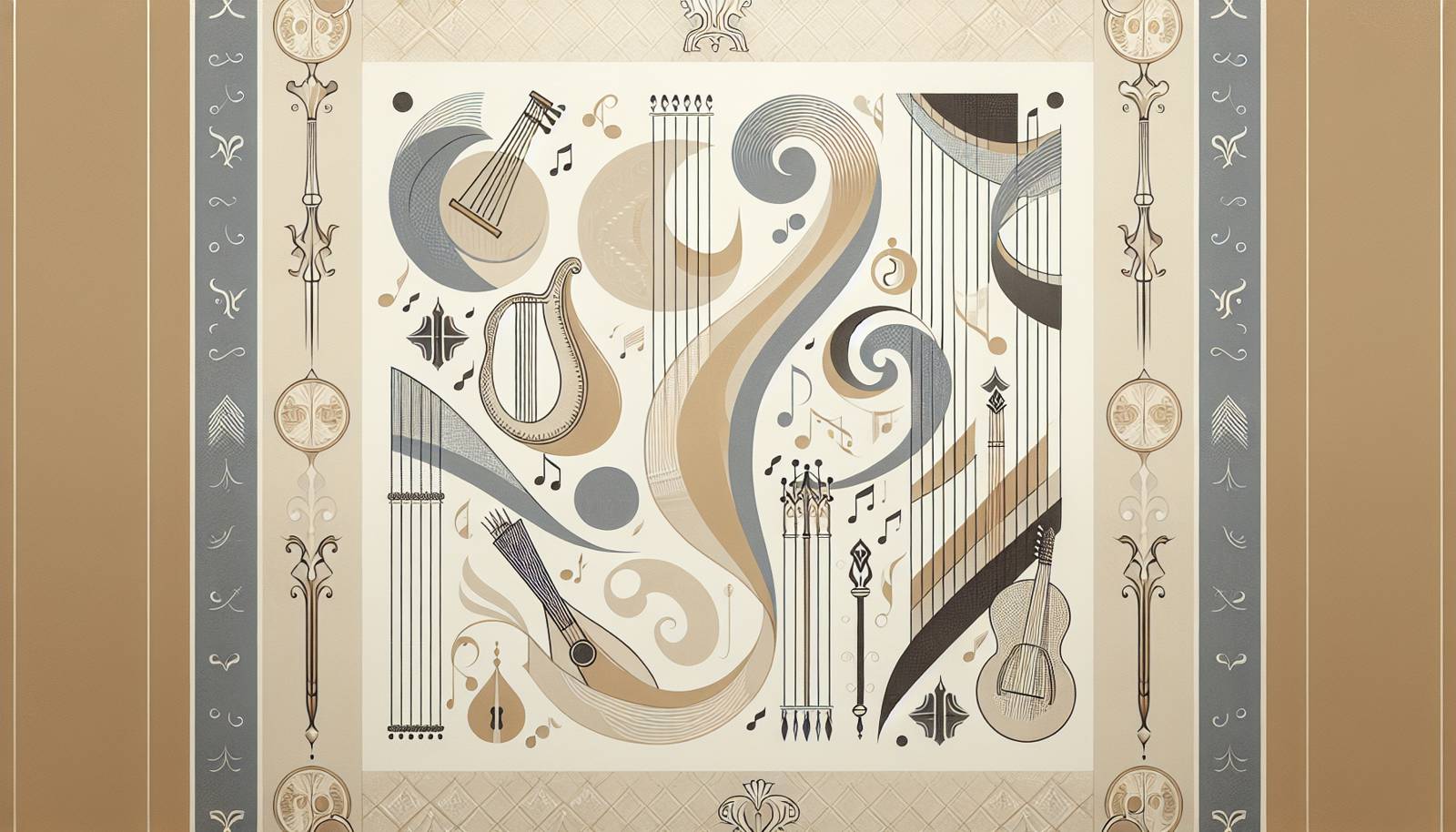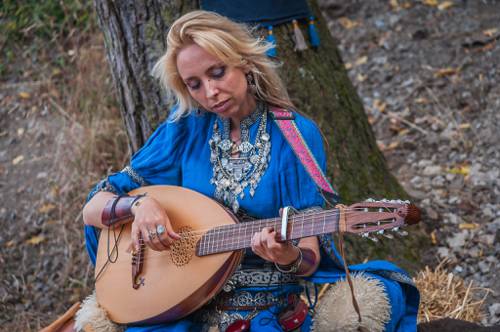
FAQ About The Influence of Medieval Instruments on Modern Music

What are some medieval instruments that have influenced modern music?
Several medieval instruments have left a lasting impact on modern music. Notable examples include the lute, which is a precursor to the modern guitar; the hurdy-gurdy, which has influenced the sound of folk and rock music; and the bagpipes, commonly used in both traditional and contemporary genres. The recorder and harpsichord are also medieval instruments that have continued to influence classical and folk music compositions today.

How have medieval string instruments shaped modern music?
Medieval string instruments like the lute, vielle, and harp have had a significant impact on modern music. The lute, for example, evolved into the modern guitar, affecting genres such as classical, folk, and pop. The design and playing techniques of medieval harps have influenced the development of contemporary harps, which are found in orchestral and popular music settings.

In what ways has the medieval hurdy-gurdy influenced today's music genres?
The hurdy-gurdy, with its unique mechanical setup and droning sound, has influenced modern music in several ways. Artists in genres such as folk, rock, and electronic music have embraced its distinctive sound to add a historical or exotic flavor to their compositions. Bands like Led Zeppelin and artists such as Lisa Gerrard have incorporated the instrument's rich, buzzing tones to enhance their soundscapes.

Are medieval instruments used in film and television soundtracks today?
Yes, medieval instruments are frequently used in film and television soundtracks to evoke a sense of history or fantasy. Their distinctive sounds can help create an atmospheric background for period films, historical dramas, and fantasy themes. The use of instruments like the hurdy-gurdy, bagpipes, and lyres can be heard in soundtracks for movies and series like "Game of Thrones," "The Lord of the Rings," and "Braveheart."

Why do modern musicians incorporate medieval instruments in their music?
Modern musicians often incorporate medieval instruments into their music for a variety of reasons. These instruments can add a unique and authentic sound that distinguishes their music from more conventional compositions. Furthermore, the historical and cultural depth associated with these instruments can lend an air of authenticity or thematic richness, particularly in genres like folk, world music, and film scores.

How has the medieval recorder influenced contemporary music?
The medieval recorder, though not as prominent as other instruments, has influenced contemporary music by being a precursor to modern woodwind instruments. Its simple design and playability make it an educational tool in music education, shaping the foundational understanding of wind instruments for many young musicians. Additionally, its clear, bright tone is sometimes used in folk and classical compositions to evoke a historical sound.

What role did the medieval organ play in developing today's keyboard instruments?
Medieval organs were precursors to the modern keyboard instruments, having influenced their design and functionality. As technology advanced, the mechanical complexity and expressive capability of organs improved, eventually leading to the development of the piano and electric keyboards. These advancements have significantly shaped the landscape of Western music, impacting a wide range of genres, from classical to contemporary pop and rock.

Can you provide examples of modern songs that feature medieval instruments?
Modern songs that feature medieval instruments span across diverse genres. For instance, "Gaudete" by Steeleye Span incorporates elements of medieval music, including instruments like the hurdy-gurdy. Another example is Loreena McKennitt's music, which often includes the harp and medieval percussion. In the realm of modern folk music, artists like Blackmore's Night frequently use lutes and mandolins to add a medieval touch to their songs.

Have medieval instruments been adapted for use in digital music production?
Yes, many medieval instruments have been adapted for use in digital music production through sampled sounds and virtual instruments. Software plugins allow composers and producers to simulate the sounds of instruments such as the lute, hurdy-gurdy, and medieval percussion, enabling their inclusion in various musical projects without the need for physical instruments. This accessibility has broadened the creative possibilities for modern musicians.

How do orchestras incorporate medieval instruments in performances today?
Orchestras sometimes incorporate medieval instruments to perform historically informed pieces or to add unique textures to contemporary compositions. Period orchestras or ensembles specializing in early music frequently use instruments like the recorder, lute, and vielle. Additionally, modern symphony orchestras occasionally feature these instruments in special performances or collaborations that explore the fusion of old and new musical traditions.

What are the differences between medieval lutes and modern guitars?
Medieval lutes and modern guitars differ in several ways, including construction, tuning, and sound. Lutes often had rounded backs made from strips of wood and a larger body compared to the flat-backed, solid or hollow bodies of modern guitars. Lutes typically had more strings, often in pairs or groups, and were tuned differently from modern guitars. These structural differences gave lutes a distinct, resonant sound that is mellower and more delicate than that of the modern guitar.

Why are medieval bagpipes popular in certain music genres today?
Medieval bagpipes are popular in certain music genres due to their distinctive, haunting sound that adds depth and authenticity. They are prominently used in folk music to reflect cultural traditions. Genres like Celtic rock and historical soundtracks also celebrate the bagpipes for their ability to evoke a deep sense of drama and emotion. The instrument's rich, sustained notes complement both ensemble and solo performances.

What impact did medieval percussion instruments have on modern drumming?
Medieval percussion instruments, such as tambourines, bells, and early drums, laid the groundwork for modern drumming techniques and instruments. These early percussion tools influenced the design, construction, and playing styles of contemporary percussion instruments. The variety and use of rhythm in music today traces its roots back to these medieval percussion instruments, which have expanded in form and complexity over the centuries.

How has medieval music theory influenced contemporary music genres?
Medieval music theory, with its modes and polyphony, has influenced contemporary music in multiple ways. The modal scales common in medieval music form the basis of many folk, jazz, and blues compositions today. Polyphonic styles from the medieval period are echoed in genres where multiple independent melodies or harmonies are intertwined, such as choral music and complex orchestral arrangements.

Which medieval instruments are still played today in traditional forms?
Several medieval instruments are still played today in their traditional forms, particularly in folk music and historical music circles. The hurdy-gurdy, bagpipes, and recorder are commonly used by musicians seeking to preserve the authentic sounds of the past. Instruments like the vielle and lyre are also reconstructed and played in specialized ensembles dedicated to early music performance.

What technological advancements allowed for the adaptation of medieval instruments in modern music?
Technological advancements such as digital sampling, electronic amplification, and instrument crafting techniques have facilitated the adaptation of medieval instruments in modern music. These technologies enable musicians to recreate the sounds of ancient instruments using electronic devices or modified versions that retain historical aesthetics while offering modern conveniences like improved durability and tuning stability.

Why are medieval flutes and recorders important in music education today?
Medieval flutes and recorders remain important in music education due to their simplicity and ease of playability, making them ideal for teaching fundamental musical concepts. They provide an accessible entry point for young learners to understand breath control, finger coordination, and tone production. As such, they continue to be popular educational tools in schools worldwide.

What challenges do musicians face when integrating medieval instruments into modern compositions?
Musicians face several challenges when integrating medieval instruments into modern compositions, including tuning compatibility, balancing ancient and contemporary sounds, and mastering the unique playing techniques required by these instruments. Additionally, sourcing good quality medieval instruments or accurately replicating their sounds digitally can also be difficult, requiring specialized knowledge and resources.

How do medieval festivals and events contribute to the popularity of medieval music today?
Medieval festivals and events play a significant role in maintaining and boosting the popularity of medieval music today by providing platforms for live performances and facilitating cultural exchange. These gatherings allow musicians to showcase medieval instruments and compositions, often creating engaging, immersive experiences for audiences. They promote historical appreciation and serve as educational opportunities for those interested in medieval music and its instruments.

How has medieval music influenced modern experimental and avant-garde music genres?
Medieval music has influenced modern experimental and avant-garde music by providing alternative scales, tunings, and rhythmic structures that challenge conventional music norms. Composers and artists in these genres may draw inspiration from medieval modal systems or polyphonic textures to create innovative soundscapes. The distinctive timbres of medieval instruments are also used to explore new sonic possibilities outside traditional music paradigms.
